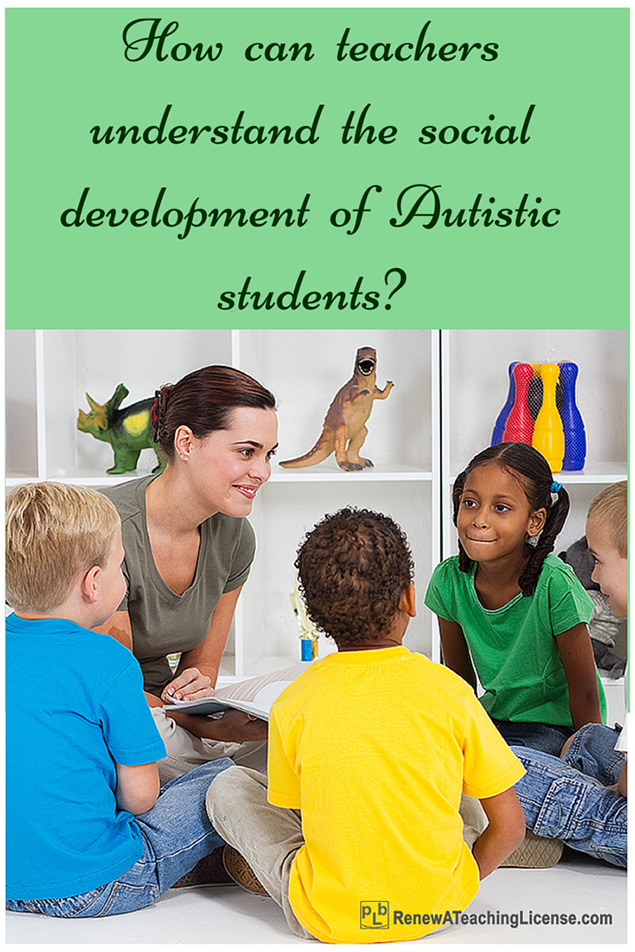How can teachers understand the social development of autistic students?
Posted by Network Support · Leave a Comment
 Social Interactions are an integral part of our daily life. None of us live in isolation and learning to interact and communicate with people around us is essential to our survival, fulfillment and development. However, people with autism have marked deficits in their social interactions.
Social Interactions are an integral part of our daily life. None of us live in isolation and learning to interact and communicate with people around us is essential to our survival, fulfillment and development. However, people with autism have marked deficits in their social interactions.
For the student with autism, their understanding of themselves and others is very different and thus their motivation for social interactions is decreased. Moreover, these students have specific difficulties in interpreting and using language and social cues. Social Development is thus an important area that is significantly affected in a person with autism, and is a vital area for teachers to understand, in order to effectively support students. Let us consider a few specific aspects of autism, which impact social behavior and development.
Empathy: An important difference between typical students and those with autism is the development of mirror neurons. Mirror neurons enable a person to “mirror” actions, thoughts and feelings. People with autism lack the early development of their mirror neurons. Mirror neurons allow us to watch others while physically and emotionally “feeling” what we are seeing. Close your eyes and imagine watching a tightrope walker carefully walking across a high wire. Notice how your own body reacts to the balancing of the walker high above the ground. What you are feeling is your mirror neurons reporting. This also occurs when we see a child crying and can “feel” their pain and sorrow. People with autism are believed to be delayed in the development of mirror neurons and often lag in their ability to experience true empathy. They may not really feel what another person feels just by looking at someone.
Eye Contact: We have a part of our brain that analyzes and recognizes faces. People with autism may be overly sensitive in this part of the brain and looking at a face can actually be painful. Others with autism may not develop this part of the brain fully or they may block processing faces completely. Therefore, eye contact may make some people with autism uncomfortable. Visual contact with faces can also affect the brain’s alarm system. It can be somewhat frightening or intense and uncomfortable. Some students on the spectrum may use their peripheral vision to look at people and things from the side. They may also actually try moving things into their sideline of vision in an attempt to stimulate or relax the way they’re feeling.
Social Rules: Children with autism struggle with understanding social rules. They have difficulties in areas like starting conversations, talking in a group, disagreeing with someone or behaving the right way in a social situation. As a teacher, you can guide the student and support them to behave in the right way when encountering different situations.
Such social and communication deficits can affect the overall development and functioning of a person with autism in many ways. We looked at three of the unique social interaction issues that are seen in autism. Understanding the way people with autism communicate, can help teachers to better reach and teach their students.
Like this article for teachers?
Browse the Professional Learning Board COURSE CATALOG to find related online courses for teachers in your state. Professional Learning Board is a leading provider of online professional development classes that teachers use to renew a teaching license or renew a teaching certificate.




